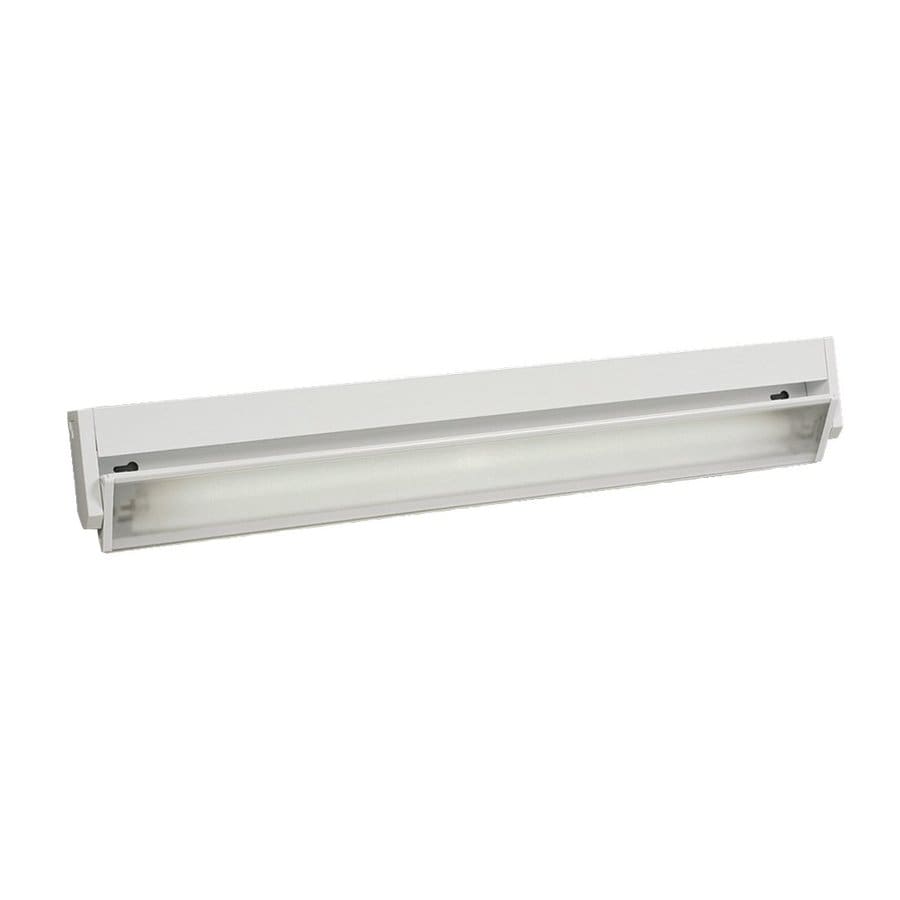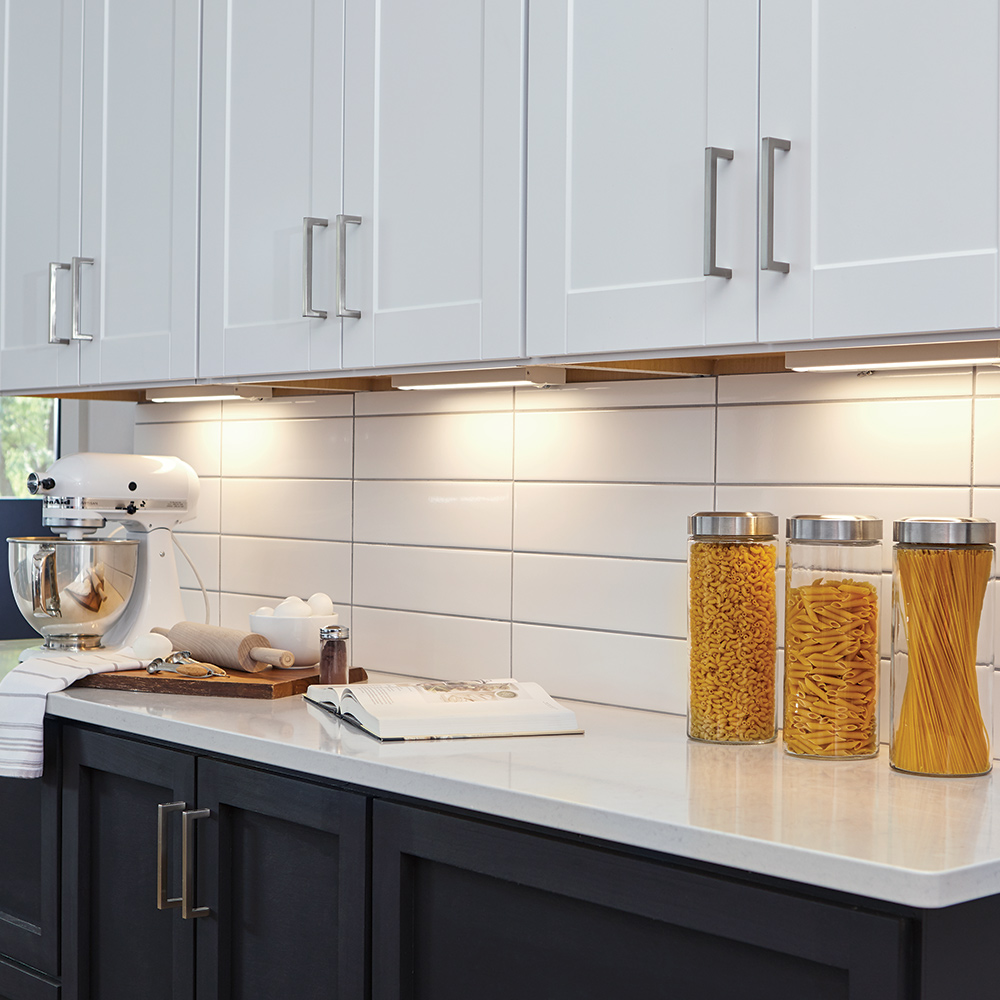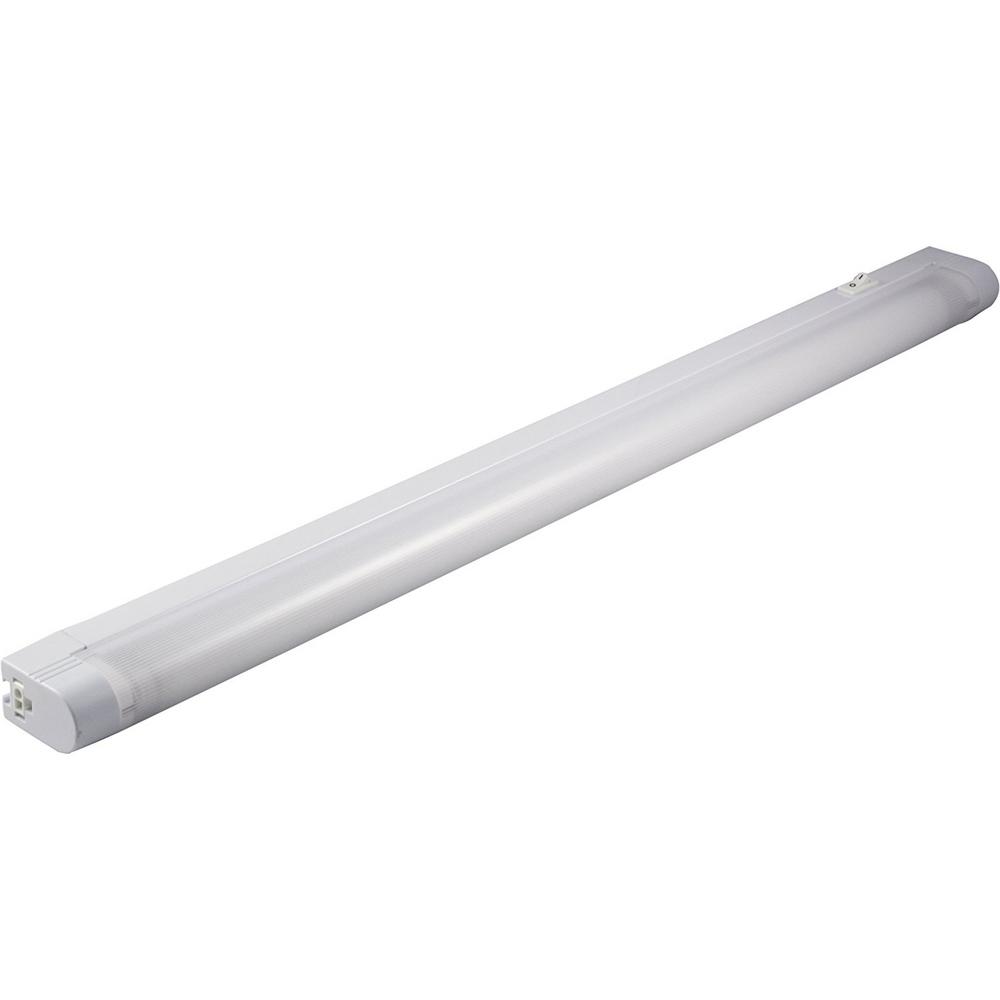Types of Fluorescent Tubes for Under Cabinet Lighting: Fluorescent Tube Under Cabinet Lighting Kitchen

Fluorescent tubes are a popular choice for under cabinet lighting due to their energy efficiency and long lifespan. There are several different types of fluorescent tubes available, each with its own advantages and disadvantages. Choosing the right type of tube depends on your specific needs and preferences.
Types of Fluorescent Tubes
Fluorescent tubes are available in a variety of sizes, shapes, and color temperatures. The most common types of fluorescent tubes used for under cabinet lighting are:
- Linear fluorescent tubes: These are the traditional, straight tubes that are commonly used in offices and homes. They are available in a variety of lengths and diameters, and they can be used in a variety of fixtures. Linear fluorescent tubes are known for their high efficiency and long lifespan. They are also relatively inexpensive.
- Compact fluorescent lamps (CFLs): CFLs are a more energy-efficient alternative to incandescent bulbs. They are also smaller than linear fluorescent tubes, making them ideal for use in under cabinet lighting fixtures. CFLs are available in a variety of shapes and sizes, including spiral, U-shaped, and linear. CFLs have a longer lifespan than incandescent bulbs and use less energy. However, they are not as efficient as linear fluorescent tubes.
- LED tubes: LED tubes are the most energy-efficient type of fluorescent tube available. They are also very durable and have a long lifespan. LED tubes are available in a variety of shapes and sizes, including linear, circular, and square. LED tubes offer high energy efficiency, a long lifespan, and excellent color rendering. They are also becoming increasingly popular due to their durability and low heat output.
Comparison of Fluorescent Tube Types
The following table compares the different types of fluorescent tubes in terms of their size, lumens, color temperature, energy efficiency, and lifespan:
| Type | Size | Lumens | Color Temperature | Energy Efficiency | Lifespan |
|---|---|---|---|---|---|
| Linear Fluorescent | Various lengths and diameters | 1,500-3,000 lumens | 2,700-6,500K | High | 10,000-20,000 hours |
| Compact Fluorescent (CFL) | Small, spiral, U-shaped, linear | 500-1,500 lumens | 2,700-6,500K | Moderate | 6,000-10,000 hours |
| LED Tube | Various lengths and shapes | 1,000-3,000 lumens | 2,700-6,500K | Very high | 25,000-50,000 hours |
Advantages and Disadvantages of Each Type of Fluorescent Tube
Linear Fluorescent Tubes
- Advantages: High efficiency, long lifespan, relatively inexpensive.
- Disadvantages: Can be bulky, require a ballast, may flicker, and have a longer warm-up time compared to LED tubes.
Compact Fluorescent Lamps (CFLs)
- Advantages: More energy-efficient than incandescent bulbs, longer lifespan than incandescent bulbs, smaller size than linear fluorescent tubes.
- Disadvantages: Not as efficient as linear fluorescent tubes, may not be as durable as linear fluorescent tubes, can take some time to reach full brightness, and contain mercury, requiring proper disposal.
LED Tubes
- Advantages: Most energy-efficient type of fluorescent tube, very durable, long lifespan, excellent color rendering, low heat output, instant-on, and no warm-up time.
- Disadvantages: More expensive than linear fluorescent tubes and CFLs, may require a special fixture for installation.
Installation and Wiring Considerations

Installing fluorescent tube under cabinet lighting involves a few key steps, including selecting the right fixtures, planning the wiring, and ensuring safety. This section will provide a comprehensive guide to help you navigate the installation process, from choosing the appropriate fixtures to understanding electrical considerations.
Types of Fixtures
The choice of fixture depends on your kitchen’s layout and electrical specifications. Two main types of fixtures are available: hardwired and plug-in.
- Hardwired fixtures are directly connected to the electrical wiring in your kitchen. They offer a more permanent and often more powerful solution, typically used for larger installations or when you want to control the lighting with a switch.
- Plug-in fixtures are simply plugged into an existing outlet. They are easier to install and more flexible, allowing you to move them around as needed. However, they may have lower wattage output and can be limited by the available outlet.
Choosing the Right Fixture, Fluorescent tube under cabinet lighting kitchen
The ideal fixture depends on factors such as the length of your cabinets, the desired brightness, and the existing electrical wiring in your kitchen.
- Cabinet length: Measure the length of your cabinets to determine the number and size of fixtures you need. Ensure that the fixtures you choose are compatible with the length of your cabinets and that they provide adequate coverage.
- Desired brightness: Consider the brightness level you need for your kitchen. This will depend on the size of your kitchen, the intended use of the under-cabinet lighting, and your personal preference. The brightness of fluorescent tubes is measured in lumens, and higher lumens mean brighter light.
- Electrical wiring: Check the electrical specifications of your kitchen. Ensure that your existing wiring can handle the wattage of the chosen fixtures. If you are unsure, consult a qualified electrician.
Installation Steps
Installing fluorescent tube under cabinet lighting requires a few basic steps.
- Plan the layout: Determine the location of your fixtures and plan the wiring accordingly. This includes considering the placement of switches, outlets, and any existing wiring.
- Prepare the wiring: If you are hardwiring the fixtures, you will need to run new wiring or connect to existing wiring. This involves identifying the appropriate circuit, running the wiring through the walls or ceiling, and connecting it to the fixture. Ensure that the wiring is properly insulated and secured to prevent electrical hazards.
- Install the fixtures: Once the wiring is prepared, mount the fixtures to the underside of your cabinets. Use screws or adhesive mounting strips to secure the fixtures in place. Ensure that the fixtures are securely mounted and level.
- Connect the wiring: Connect the wiring to the fixture according to the manufacturer’s instructions. This may involve stripping the wire insulation, connecting the wires to the fixture’s terminals, and securing the connections with wire nuts.
- Test the installation: After connecting the wiring, turn on the power and test the installation. Ensure that the lights turn on and that there are no signs of electrical problems.
Safety Tips
Installing electrical wiring requires caution and attention to safety.
- Always disconnect power: Before working on any electrical wiring, always disconnect the power to the circuit you are working on. This will prevent electrical shocks and other hazards.
- Use appropriate tools: Use insulated tools and protective equipment, such as gloves and eye protection, when working with electrical wiring. This will minimize the risk of electrical shocks and injuries.
- Follow electrical codes: Ensure that your installation complies with local electrical codes. This will ensure the safety of your installation and prevent potential hazards.
- Consult a professional: If you are unsure about any aspect of the installation, consult a qualified electrician. They can help you with planning, wiring, and ensuring the safety of your installation.
Benefits and Applications of Fluorescent Tube Under Cabinet Lighting

Fluorescent tube under cabinet lighting offers a range of benefits that enhance both the functionality and aesthetics of kitchens. These benefits make them a popular choice for homeowners and designers alike.
Advantages of Fluorescent Tube Under Cabinet Lighting
Fluorescent tubes provide several advantages for under cabinet lighting, making them a practical and efficient solution.
- Improved Task Lighting: Fluorescent tubes emit a bright, even light that illuminates workspaces effectively. This clear and consistent illumination enhances visibility, reducing eye strain and making tasks like food preparation and cleaning easier and more enjoyable.
- Energy Efficiency: Fluorescent tubes consume significantly less energy than incandescent bulbs, leading to lower electricity bills and a reduced carbon footprint. They offer substantial energy savings over time, making them a more sustainable lighting option.
- Long Lifespan: Fluorescent tubes have a much longer lifespan than traditional incandescent bulbs, lasting for thousands of hours. This means fewer replacements, reducing maintenance costs and minimizing disruptions.
- Cost-Effectiveness: While fluorescent tubes may have a slightly higher initial cost compared to incandescent bulbs, their energy efficiency and long lifespan result in significant cost savings over time. This makes them a cost-effective lighting solution in the long run.
- Aesthetics: Fluorescent tubes can be incorporated into various under cabinet lighting fixtures, providing a sleek and modern aesthetic. They can complement different kitchen designs and create a stylish and sophisticated ambiance.
Enhancing Kitchen Functionality and Ambiance
Fluorescent tube under cabinet lighting can significantly enhance kitchen functionality and create a welcoming ambiance. By illuminating workspaces effectively, they improve visibility, making tasks like food preparation, cleaning, and cooking more efficient and enjoyable. The bright and even light also helps to create a more inviting and welcoming atmosphere in the kitchen, making it a more enjoyable space for both cooking and entertaining.
Applications of Fluorescent Tube Under Cabinet Lighting
Fluorescent tube under cabinet lighting finds various applications in kitchens, enhancing functionality and aesthetics in different areas.
- Workspaces: Fluorescent tubes provide excellent task lighting for workspaces, such as countertops, sinks, and islands. They illuminate these areas effectively, making tasks like chopping vegetables, washing dishes, and preparing meals easier and more comfortable.
- Display Areas: Fluorescent tubes can be used to highlight display areas, such as open shelving, showcasing decorative items, cookbooks, or glassware. The bright and even light helps to draw attention to these areas, creating a visually appealing focal point in the kitchen.
- Accent Lighting: Fluorescent tubes can be used to create accent lighting, highlighting specific features or elements in the kitchen, such as a backsplash, a countertop material, or a unique architectural detail. They add depth and dimension to the space, creating a more visually interesting and dynamic ambiance.
- Mood Lighting: Fluorescent tubes can be used to create a specific mood in the kitchen. For example, warm-toned fluorescent tubes can create a cozy and inviting atmosphere, while cool-toned tubes can create a more modern and sophisticated feel.
Fluorescent tube under cabinet lighting kitchen – Imagine the warm glow of fluorescent tube under cabinet lighting illuminating your kitchen, casting a soft radiance on your culinary creations. Just like the way a false wall in bedroom can cleverly divide a space, under cabinet lighting creates distinct zones within your kitchen, highlighting the beauty of your countertops and fostering a sense of focused energy.
Whether you’re a seasoned chef or a casual cook, this simple addition can transform your kitchen into a sanctuary of culinary creativity.
Just as fluorescent tube under cabinet lighting illuminates your kitchen tasks, swivel bedroom wall lights can illuminate your reading nook or vanity, casting a focused glow wherever you need it. With a simple twist, you can direct the light to suit your needs, just like you might adjust the angle of your kitchen task lighting.
Whether it’s a warm glow for relaxing or a bright beam for getting ready, swivel wall lights offer the same kind of flexible illumination that makes under-cabinet lighting so essential.